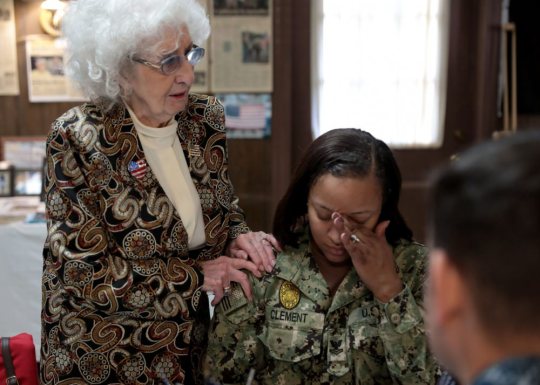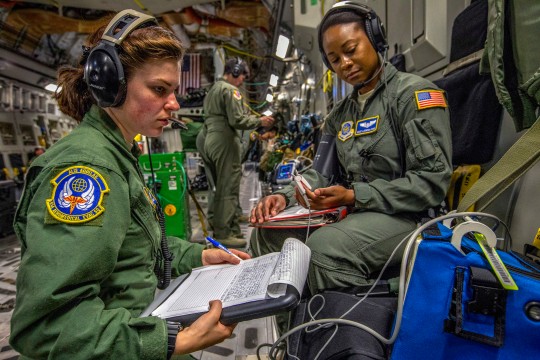
YELLOW RIBBON AMERICA NEWS DESK:
The Berlin Airlift: What It Was, It’s Importance in the Cold War Against Communism
By Katie Lange, Defense Media Activity
June 26 marks the 70th anniversary of the beginning of the Berlin Airlift, America’s first major test of resolve during the Cold War and one of the largest humanitarian aid missions in history.
Never heard of it? Well, you’re in luck – we’ve summed the history up for you here.
Post-World War II Division of Germany
After World War II ended, Germany was in ruins, and the situation in its capital, Berlin, was dire. About 2.5 million Berliners were still living in the war-ravaged city, but food was scarce and shelter was hard to find amid all the rubble. The economy was mostly black market goods at that point.
To begin rebuilding, the Allies split Germany between the U.S., Great Britain and Russia. Berlin was also divided into occupation zones; the Soviets controlled the eastern portion while the west went to the U.S., UK and France.
Unfortunately, the Soviet-Allied alliance deteriorated quickly, and tensions fully erupted by 1948.
The Breaking Point
Russia met regularly with Britain, the U.S. and France after the war to coordinate occupation policy between the varying zones, but it stopped in early 1948 when it found out the other three nations were secretly planning to create a new German state out of their zones.
In June 1948, the U.S. and U.K. introduced a new currency, the Deutschmark, to their zones, which included West Berlin. They kept it from the Soviets because they wanted to regain economic control from Russia and quell the black market that was running rampant, as well as bring in aid under the Marshall Plan, a U.S. strategy to rebuild Europe.
But the problem was this – Berlin was located far within Russia’s East Germany, so the Soviets took advantage, leading to the first Berlin crisis of the Cold War.
The Berlin Airlift Begins
On June 24, 1948, Soviet forces blockaded all road, rail and water routes into Berlin’s Allied-controlled areas, stifling the vital flow of food, coal and other supplies. Soviet troop numbers dwarfed those of the Allies, which had drawn down after the war, so there was little the Allies could do about it militarily.
But the Soviets couldn’t block Allied airspace, so U.S. and UK forces took to the skies to get supplies to the Allied sectors. On June 26, the U.S. launched Operation Vittles, which the U.K. later joined. It was the biggest aerial resupply mission ever embarked upon. The Allies also imposed their own counter-blockade, restricting trade with East Germany and East Berlin.
A Massive Mission For Freedom
The airlift was a daunting task at first. More than 2 million Berliners were relying on the aid, which included much-needed food, fuel and medicine. Over time, though, it became more efficient, and the number of airdrops increased. At one point, Air Force and Navy planes were landing at Tempelhof Airport every 45 seconds.
On Easter Sunday, April 17, 1949, the constant procession of planes managed to deliver 13,000 tons of cargo, including the equivalent of 600 railroad cars of coal – all in one day!
Things weren’t going well for the Soviets. The airlift had been going on for 10 months, and the Allies had proven they could keep it up indefinitely. The Russians had gained a reputation as bullies because of their blockade. On top of that, an Allied counter-blockade was causing severe shortages in the Russian sectors, leading to fears of an uprising.
The Soviet Union gave in and lifted the blockade on May 11, 1949; however, the airlift itself didn’t end until Sept. 30, just in case the Soviets decided to change their minds.
During the entire airlift, the U.S. and U.K. delivered more than 2.3 million tons of food, fuel and supplies to West Berlin via more than 278,000 airdrops. American aircrews made more than 189,000 flights, totaling nearly 600,000 flying hours and exceeding 92 million miles.
The airlift demonstrated America’s innovative spirit, efficiency, perseverance and leadership. It also highlighted the value of cooperation and the need to have allies to accomplish tasks that one country simply can’t do alone.
While that crisis ended peacefully, the ideological division of Europe had just begun. By the end of the blockade, the North Atlantic Treaty Organization had been established, partially in response to Soviet aggression. A few weeks later, East and West Berlin officially separated, with each becoming a symbol of their respective political views — democracy and freedom in the West versus communism in the East.





























